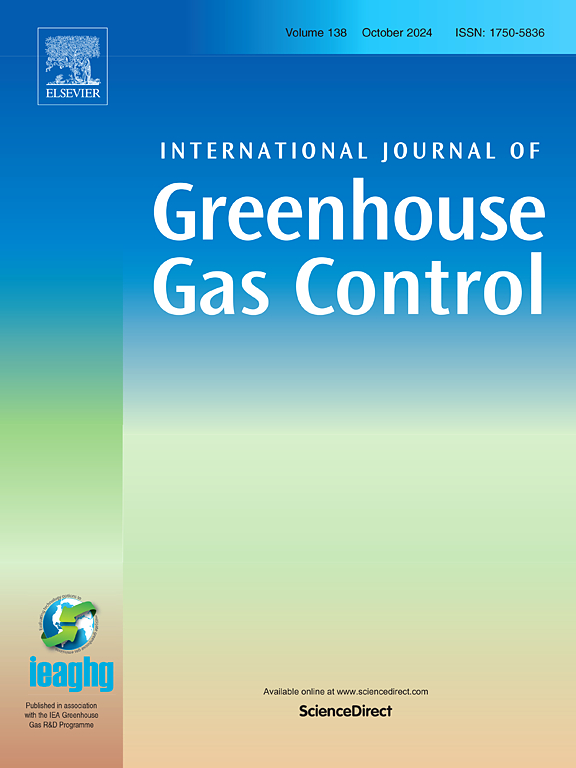Understanding drivers of oil and gas well integrity issues in the greater wattenberg area of Colorado
IF 4.6
3区 工程技术
Q2 ENERGY & FUELS
International Journal of Greenhouse Gas Control
Pub Date : 2025-02-01
DOI:10.1016/j.ijggc.2024.104296
引用次数: 0
Abstract
Well integrity is critically important to maintain to minimize the environmental impacts of oil and gas development and other subsurface energy operations. The Wattenberg Field of Colorado—a top producing field with >40,000 wells—has one of the most robust publicly reported well integrity programs in the country. In this study, we analyzed annular pressure and annular-fluid geochemical test results collected from Wattenberg wells through the end of 2019 to characterize the frequency and spatial variability of integrity issues in the field and understand their drivers. Estimated frequencies of integrity issues among tested wells were 8.2-17.1% between 1955 and 2019 and 6.1-11.4% in 2019 alone. The frequency of integrity issues was nearly four times greater in wells located above the Longmont Wrench Fault Zone. Potential drivers of integrity issues were identified using ensemble decision tree models trained with a broad set of relevant information. Models show that well integrity issues are spatially clustered on regional and sub-regional scales and suggest the relatively high frequency of integrity issues observed is associated with geologic factors. These findings are valuable for regulatory agencies and operators responsible for well integrity monitoring, management, and pluggingefforts and may also impact the design of future subsurface energy projects.

了解科罗拉多州大瓦滕贝格地区油气井完整性问题的驱动因素
为了最大限度地减少油气开发和其他地下能源作业对环境的影响,保持井的完整性至关重要。科罗拉多州的Wattenberg油田是一个拥有4万口井的顶级生产油田,拥有全国最强大的井完整性计划之一。在这项研究中,我们分析了截至2019年底从Wattenberg井收集的环空压力和环空流体地球化学测试结果,以表征该油田完整性问题的频率和空间变异性,并了解其驱动因素。1955年至2019年期间,测试井完整性问题的估计频率为8.2-17.1%,仅2019年就为6.1-11.4%。位于Longmont扳手断裂带上方的井发生完整性问题的频率几乎是其他井的四倍。完整性问题的潜在驱动因素是通过使用大量相关信息训练的集成决策树模型来确定的。模型显示,井完整性问题在空间上集中在区域和次区域尺度上,并表明观测到的相对较高的完整性问题频率与地质因素有关。这些发现对于负责油井完整性监测、管理和封堵工作的监管机构和运营商来说很有价值,也可能影响未来地下能源项目的设计。
本文章由计算机程序翻译,如有差异,请以英文原文为准。
求助全文
约1分钟内获得全文
求助全文
来源期刊
CiteScore
9.20
自引率
10.30%
发文量
199
审稿时长
4.8 months
期刊介绍:
The International Journal of Greenhouse Gas Control is a peer reviewed journal focusing on scientific and engineering developments in greenhouse gas control through capture and storage at large stationary emitters in the power sector and in other major resource, manufacturing and production industries. The Journal covers all greenhouse gas emissions within the power and industrial sectors, and comprises both technical and non-technical related literature in one volume. Original research, review and comments papers are included.

 求助内容:
求助内容: 应助结果提醒方式:
应助结果提醒方式:


